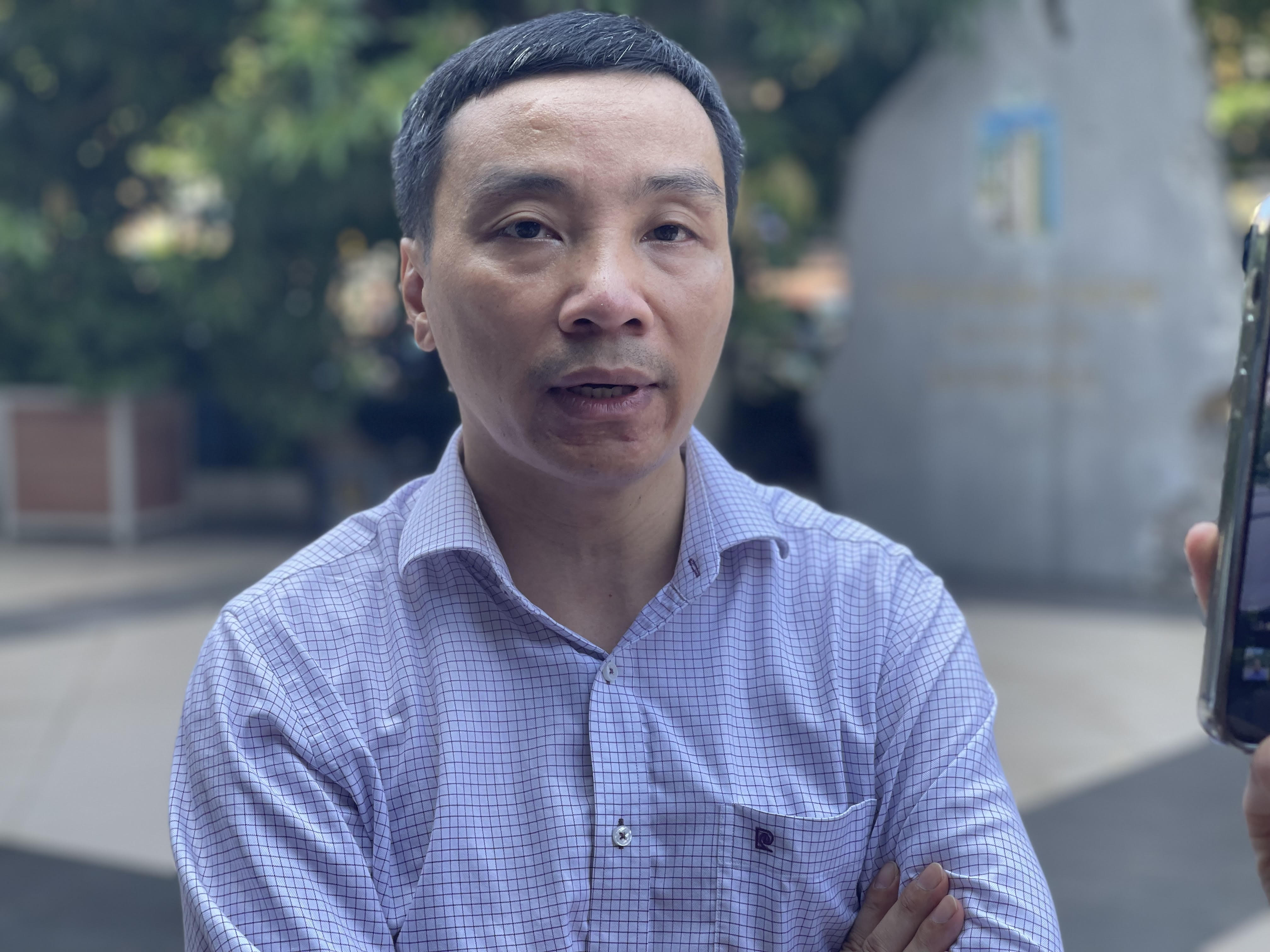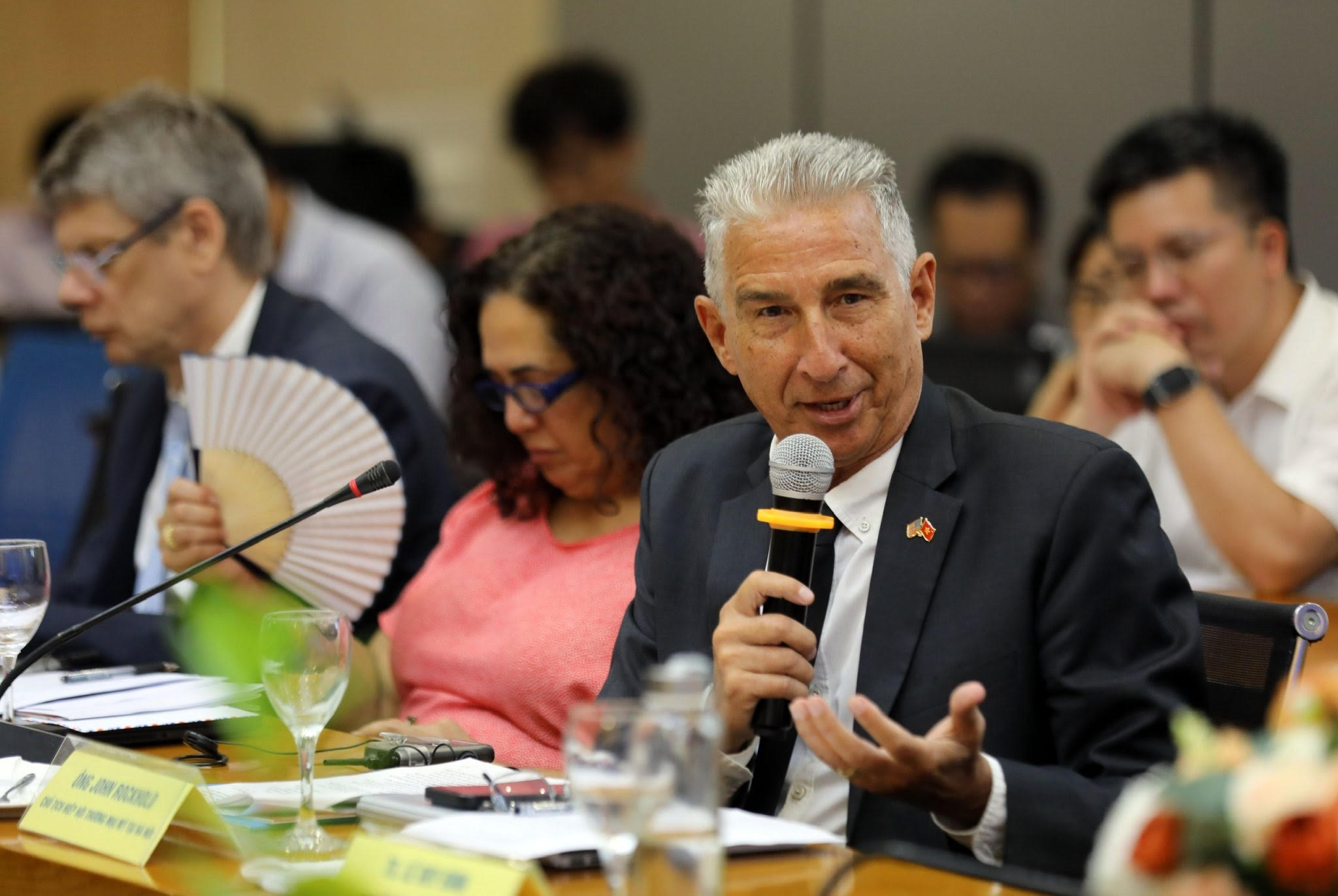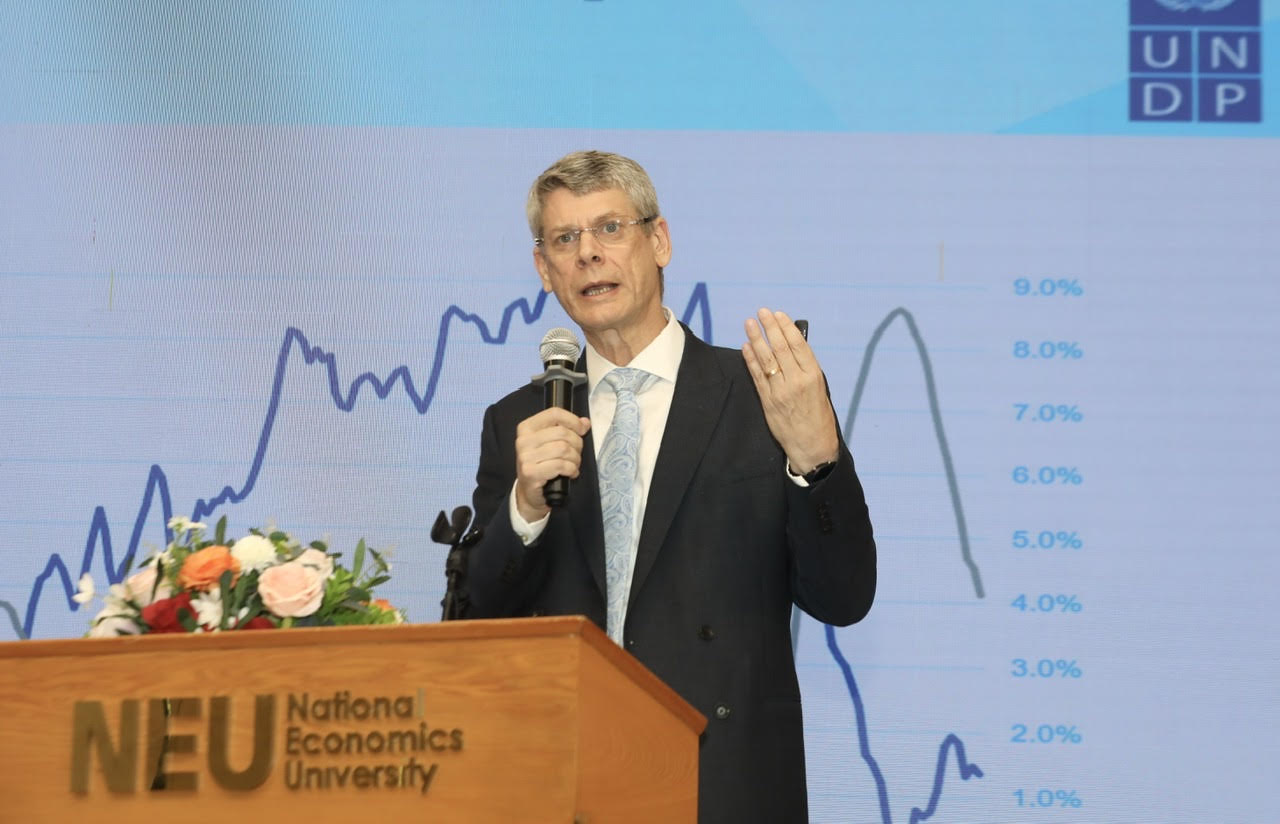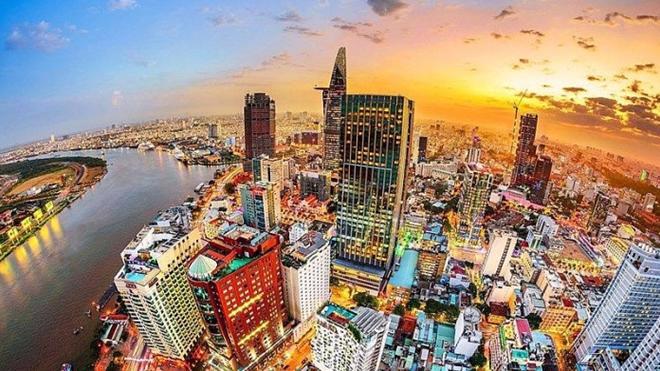Associate Professor Pham The Anh, National Economics University

GDP growth in the second quarter of 2023 was higher than in the first quarter but still low compared to pre-Covid years. Though there are a few positive signs, Vietnam’s economy still faces many difficulties and the foundation for recovery is uncertain. Inflation has fallen sharply since the end of 2022, revealing weak demand in the economy. Economic data shows that all three components of aggregate demand - consumption, investment, and exports - have weakened.
The economic situation will continue to face difficulties in the second half of the year. Vietnam’s growth target of 6.5 per cent for 2023 is already out of reach.
However, consumption will improve in the second half, thanks to lower interest rates stimulating demand, the recovery of asset markets, especially the stock market, and rising numbers of foreign tourists.
Regarding investment, lower interest rates will improve the investment requirements of enterprises. Public investment will be better thanks to the government’s efforts in disbursement, while private investment will face certain difficulties because the long-term policies of enterprises need more than just lower interest rates.
Exports are highly dependent on the global economy, which remains unstable. It is therefore not possible to expect much from exports, especially in the context of major economies maintaining high interest rates.
Vietnam needs to implement certain measures to selectively stimulate aggregate demand and combine policies to improve potential aggregate supply.
Mr. John Rockhold, Chairman of the American Chamber of Commerce (AmCham Vietnam), President of PRIM Vietnam

The global economic environment presents some risks. Reduced demand in the US and the EU have created a backlog in inventories, with decreasing factory orders. Coupled with reduced domestic demand in Vietnam, this is seeing slower GDP growth. This reduction should be somewhat offset in the next six months by supply-side gains resulting from robust FDI inflows that will drive Vietnam’s plan for infrastructure spending, especially greener infrastructure.
One of the bright spots that we see is that Vietnam is moving forward on a greener economy and especially in the power sector. Vietnam is now the top producer of green electricity in all of Asia and the ninth in the world. It has passed many European countries as well as others. Vietnam is therefore moving in the right direction. Over 45 per cent of its energy now comes from renewables. And this is even with all the problems with its hydro dams. If hydro dams were back to normal, it would be closer to 50 per cent.
The Vietnamese Government has said it will not place any limits on industries producing their own green energy, like rooftop solar, or connecting to their own solar farms. This is very good stimulus for the economy. I think this is a very positive move, which will create more jobs and attract more FDI into the country. Vietnam needs to keep things simple to make it easier to unlock corporate funding in renewable electricity for self-consumption. Companies need the freedom to put in place their own procurement strategies that best fit their energy needs with Vietnamese providers of direct power purchase agreements, equipment, and services.
Areas I think Vietnam needs to focus on include natural resources, especially rare earths. It can attract more FDI in this sector and start supplying the world with cleaner rare earths. By opening up this sector and pouring money into it, Vietnam can create more jobs and sell more infrastructure.
As we can see, the global economy has a big impact on Vietnam, especially as the country is an exporter. So, when people are not buying like they once were, Vietnam can help itself by developing infrastructure, and in particular green infrastructure, which will attract more FDI because investors can manufacture their products in Vietnam. This is a way of helping the country through the next year and a half to overcome the current situation.
Vietnam will have to look at itself and how to stimulate its economy. Before it can return to normal exports, it needs to think about what it can do domestically to earn money and attract more investment.
Mr. Le Trung Hieu, Deputy Director General of the General Statistics Office (GSO)

Growth was only 3.72 per cent in the first half of 2023, which is much lower than the first-half scenario in Resolution No. 01/NQ-CP. To achieve the growth rate over the second half and fulfill the annual target set by the National Assembly (NA) of 6.5 per cent will be very challenging.
According to assessments, demand declined sharply in the first half of the year, especially in countries that are major partners of Vietnam, such as the US, the EU, and some Asian countries, which witnessed a relatively large decline in aggregate demand. Vietnam has a high level of economic openness, so this decline directly affects industries, especially manufacturing and processing, electronics, footwear, garments and textiles, and wooden furniture. Data shows that the manufacturing and processing industry has been a driving force of growth over the past 14 years, while industry is now in significant decline, leading to low growth in the first half.
The agricultural sector, meanwhile, recorded steady growth and remained the backbone of the economy. The services sector continued to grow quite well in the first quarter compared to the same period last year, when Covid-19 still had an effect, and slowed in the second quarter. In the second half of 2022, especially the third quarter, the services sector posted significant growth, and is expected to do likewise in the closing months of 2023.
Regarding solutions to restore aggregate demand, I think the most important thing remains global aggregate demand. When global aggregate demand recovers and develops, domestic orders and production will return. Other countries and major partners of Vietnam, such as the US, have begun to show improvements and the technical recession has gradually subsided, with demand in the US and the EU growing. This gives hope to Vietnam over the last months of the year, especially in industry. The commercial and service sectors will also grow, especially tourism.
The government has adopted many measures to stimulate domestic consumption. The recent policy on reducing VAT rates from 10 to 8 per cent, effective from the beginning of July, will encourage people to consume more. A number of other tax policies, such as a 50 per cent reduction in registration fees for vehicles manufactured and assembled in Vietnam and preferential interest rates when buying social housing, etc., will also contribute to stimulating domestic consumption and boosting domestic production.
The government will also continue to introduce solutions and policies to boost domestic production. However, because Vietnam has a high degree of economic openness, domestic production depends greatly on the recovery of demand in foreign countries and especially in Vietnam’s major partners.
In order to boost economic growth over the second half of the year, I think one priority is to promote public investment. The volume of public investment capital and capital from the recovery program is substantial, at more than VND700 trillion ($29.5 billion). Though accounting for 25 per cent of total investment capital in the whole of society, public investment capital will be “bait” to promote private investment and be a driving force in sectors such as manufacturing and construction. The government is now promoting public investment.
Dr. Jonathan Pincus, UNDP Senior International Economist

The bright spots are that Vietnam is still very competitive and global markets are still very attractive for FDI and are still rapidly transforming its energy system. So all those things are good and they will be good for the long term. However, at the moment, global demand is quite weak. So, we can see that exports are down but I think the long term trends are still quite favorable.
I think it’s not a bad thing for Vietnam to be very closely integrated into the global economy. Of course, when you have a downturn like right now, it can be a problem for the short term. But in the long term, it is very positive to be tightly integrated not only with global economies but also with regional economies such as Northeast Asia, China, Taiwan (China), and Singapore. So I don’t think there should be any reversal of the policy on integration. I think that’s still very positive. It’s just that when global demand slows down, Vietnamese companies are under pressure. And that means the government has to step in and provide some more domestic demand. This is what we are talking about to make fiscal policy more countercyclical. So when the economy slows down globally, the government spends more money to try to support domestic demand.
The next six months are going to be difficult because we have two sectors slowing at the same time. We have the foreign sector slowing, as seen in exports, and we also have a very weak domestic property sector. So with both slowing at the same time, I think it’s going to be a difficult six months. Over the longer period, both will recover. The question is how to accelerate that recovery.
Regarding the property sector, I think the important thing is not to provide cheap credit to households or developers, because that only creates problems for the future. I think a policy on social housing, to redirect investment towards the construction of houses for low-income people, would be very useful. In terms of exports, I think that will come back by itself. Vietnam is still a very competitive destination. FDI continues to flow in on a large scale. We see new companies coming in all the time. And Apple, for example, is expanding its footprint in Vietnam. So I think that the export sector will come back by itself.
Professor To Trung Thanh, Dean of the Department of Science Management, National Economics University

Vietnam’s economy clearly showed difficulties in both aggregate demand and aggregate supply in the first half of the year. In terms of aggregate demand, all components revealed limitations, resulting in low growth in the first half and presenting challenges in achieving the targeted 6.5 per cent growth for the year as a whole.
Private sector investment in the private sector has been falling sharply, reflecting the major difficulties facing the business community. Such investment increased just 2.1 per cent; the lowest in many years and a steeper decline than seen in 2020 and 2021, during Covid-19. Meanwhile, FDI also fell, with registered capital in the half reaching $13.43 billion, down 4.3 per cent year-on-year.
Regarding exports and imports, export turnover in the first half fell 12.1 per cent year-on-year, to $164.45 billion, while imports posted a steeper decline, of 18.2 per cent, reflecting the difficulties from falling external demand.
Though the reduction in imports supports aggregate demand, it also reflects a very strong decline in the economy, because production materials account for nearly 90 per cent of import turnover, mainly from China and South Korea. The steeper decline in import turnover proves that the business sector is facing difficulties, and with lower output there is no need to import so many inputs.
Household spending is also a problem. Total retail sales increased handily in the first quarter but then gradually fell in the second quarter, reflecting two main factors: incomes and inflation.
With aggregate supply, in the first half of the year businesses faced many difficulties in both input costs and output and a shortage of orders, moderating production and business. The Index of Industrial Production (IIP) in the second quarter increased by only 0.2 per cent year-on-year, in which the manufacturing and processing industry fell 0.4 per cent.
Despite the many difficulties, Vietnam’s economy still posted positive results and set up economic recovery in the second half. Besides monetary policies to support businesses, it is necessary to focus more on fiscal policy to support the economy. In the composition of aggregate demand, export and import activities depend on external factors and are subject to fluctuations from the global economy. Therefore, efforts should be made to focus on controllable factors such as public investment, supporting input costs for businesses.









 Google translate
Google translate